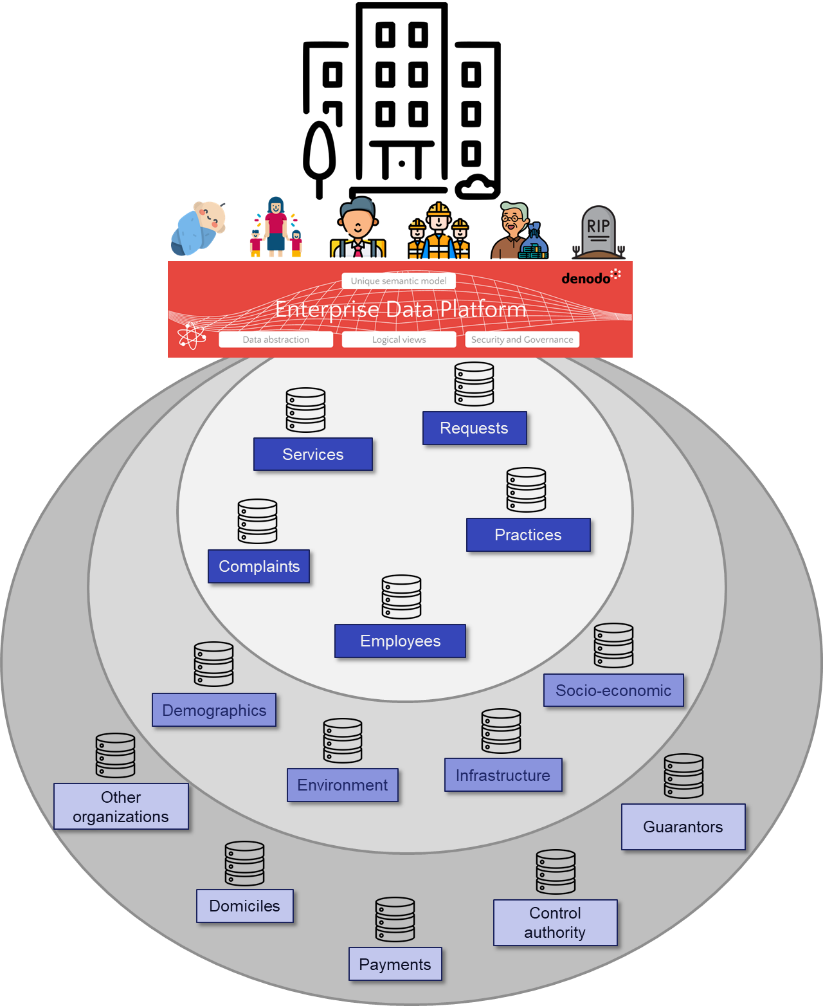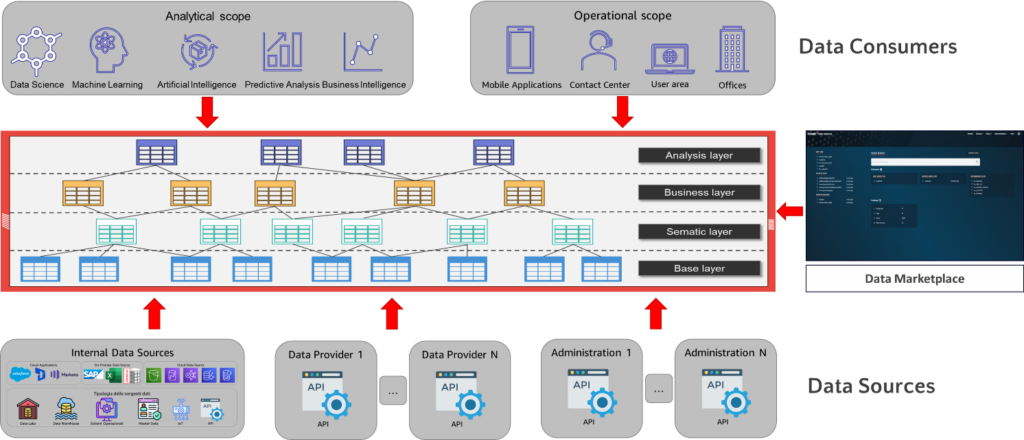
The world is changing, and it is changing faster and faster, subject to events that disrupt the linearity of change and where events propagate with the speed of a tidal wave, which to be ridden requires ever-changing skills to stay on the crest of it without being swept away by it.
We also change and our needs change and, in a public scenario, administrations must be in sync with these changes, to avoid that the gap between the needs of the community and the ability to address them widens more and more, amplifying that perception of disconnection between those who live the community and those who manage it.
Time is precious. It is the new unit of measurement, and its careful and efficient management is the key to governing it. Waiting is not allowed, because as Seneca reminds us, “Dum differtur, vita transcurrit”
Every administration should aspire to be fluid, to adapt to the changing forms taken by the context with which it is confronted, and not viscous, so that such adaptation is rapid because, if it were not, there would be a risk of adapting to something that, in the meantime, has already changed shape.
The peculiarities of the public sector
In the public sector, the ability to integrate and analyze data in an agile, fast and simple manner is crucial, considering that what at first and superficial reading is seen as a single entity is, on the contrary, a set of distinct entities working for a common purpose.
This harmonious operation, to enable participants in public life to be able to exercise their rights and to do so in accordance with their duties, has in the data the foundational element, especially considering that what the participant is and does requires representation necessarily distributed among the different administrations, each of which is responsible for a partial part of it.
Why we need to represent a citizen in a new way
Every citizen possesses certain inherent characteristics that define who he or she is, characteristics that change throughout his or her life, from birth to death. The same citizen, however, lives in a specific context, marked by demographic, economic, social and cultural elements, which inevitably shape the way he or she is and, above all, characterize the way in which he or she interacts with the Public Administration, in terms of the services from which he or she can benefit, the rights he or she can exercise and the duties to which he or she must comply.
Since in the digital world every representation is nourished by data, it is necessary to define the different levels that allow this representation to be gradually extended so that it is increasingly richer and more complete, enabling it to generate the value that, on the one hand, the citizen expects as part of a community, and on the other hand, administrations need in order to provide services in line with the community’s expectations.
Administration level
It is the data under the direct control of the administration, for which the administration has ownership and responsibility, regardless of whether it is on-premise or in the cloud.
Extended Administration level
In addition to the data under the direct control of the administration, there are also data provided by external data providers, data that depend on the services provided by those providers.
Augmented Administration level
These are the data that are shared between an administration and other administrations or private entities, so as to create an ecosystem whose boundaries are no longer strictly defined by the legal framework that defines the administration itself, but by that which determines its role in the community, in terms of what it should give and what it should receive.
Towards an Augmented Citizen View
In continuity with the layers described above, it is possible to use the same approach, defining similar layers for the representation of the citizen, resulting in what is schematized by the figure below, where the representation of the citizen throughout his or her life cycle can be extended so that it can be enriched with all the data useful or necessary for providing services, conducting analysis or making decisions.
These levels are not a semantic obligation – and they should not be – but an opportunity to be seized whenever it is deemed useful or necessary, according to that principle which tells us that the representation of a concept must always be guided by the use that we want to make of it.
The role of logical data architectures
Logical data architectures refer to conceptual models that define the meaning of data and how they are logically organized, according to an abstraction that guarantees flexibility and scalability. Within the logical level, the semantic model comes to life, a tool that concretizes the conceptualization of the reference context, modeling the data of interest with a single representation formalism, regardless of their technical characteristics, network distribution and the subject that holds them and is responsible for them, acting at the same time as an insulator with respect to the underlying technology, whose possible changes will be absorbed by this level, allowing the implementation of an extremely resilient architecture.
The importance of a semantic model in the Public Sector context
The semantic model acts as a conceptual glue for data belonging to different subjects, becoming a place of harmonization, data that could represent the same concept, but do so in a different way by virtue of the different interpretation that each subject gives, an interpretation that depends on the role and responsibilities of the subject itself. For example, the representation of the concept of “citizen” will reasonably differ between the interpretation given by the tax authorities and those who deal with social services, simply because these two administrations consider it according to what they do and the services they offer.
Considering that the Public Administration is composed of different subjects, with different roles and responsibilities, the possibility – or rather, the need – to have this point of harmonization becomes fundamental, since it is there that the potential inherent in the data is unleashed, which can only express itself within a representation that, on the one hand, is coherent, complete and unambiguous and, on the other hand, is still able to respect that subjectivity necessary for the different administrations so that they can fulfill their mandate.
Logical architectures in an Augmented scenario
The idea behind an Augmented Administration is that of the integration, sharing and use of data regardless of who owns and manages that data and, of course, their technical characteristics.
If, from the Data Consumer’s point of view, the ownership of a piece of data, its technical characteristics and the rules that enable its proper management, are useful but secondary elements, since his primary interest is what the piece of data represents and how well it does so, different is the issue for those who have to manage such data, who although they obviously have to deal with the representational role that data have, must also ensure its proper governance, making sure that any piece of data is usable by those who are actually entitled to it.
In a scenario involving different subjects, the idea of realizing this integration according to a traditional model, based on the well-known ETL paradigm and therefore on data replication, although technically feasible, would become almost a nightmare from the governance point of view, as it would involve taking on the responsibility of managing data that belong to legally different subjects and which, therefore, are reasonably subject to different management rules.
In a scenario like this, on the contrary, a logical architecture allows for much greater agility and ease of management and, in fact, represents the only possible alternative, since it does not require preventive replication of the data, it does not present those management complexities related to their duplication, facilitating the definition of all the necessary rules by operating exclusively on the logical model and is therefore an ideal enabler for all typical use cases in the public sector, such as those summarized in the following figure.
The role of artificial intelligence
The public sector generates and uses large amounts of data, and effective management of this data is critical to optimizing outcomes, especially for those large, time-diluted initiatives, and artificial intelligence can provide significant help in this regard.
However, it should not be forgotten that every artificial intelligence algorithm, whether traditional or generative, uses data in exactly the same way that every other data consumer does, so logical architectures are the ideal tool here as well, centralizing the representation of data in a way that, on the one hand, makes it easy to build the datasets needed by artificial intelligence algorithms and, on the other hand, provides those algorithms with the correct data as they go into production.
The importance of having an agile and efficient approach to data integration, based on their meaning rather than their technical characteristics, then becomes an essential element in a Retrieval Augmented Generation (RAG) scenario, where generative artificial intelligence models are integrated with structured data, allowing for correct management of the context, such as is necessary for a virtual assistant when it has to provide answers that are not only well-formed from a linguistic point of view, but also contain the information that the user has requested.
It should not be forgotten that artificial intelligence makes a significant contribution to Data Management as a whole, helping both the Data Consumer and the Data Steward or the Data Engineering, in the tasks in which they are usually involved, with the Denodo AI Assistant able to suggest data of potential interest to the former based on previously used data or allowing him to make requests in natural language and, to the latter, recommend particular transformations and aggregations to improve performance or suggest names and descriptions for the data so that these are more easily understood by those who need to use them.
Conclusions
Logical data architectures offer significant benefits to the public sector by facilitating data integration, improving decision making, increasing efficiency and enhancing collaboration.
By creating an integrated view of complex concepts, using internal, external and third-party data, these architectures enable the optimization of diverse operations and the provision of improved services to the community.
Adopting a logical data architecture is a strategic move that can transform the public sector and drive innovation for years to come.
- Data, vital support for a modern PA capable of responding to everyone’s needs - April 22, 2025
- Empowering the Public Sector with Data: A New Model for a Modern Age - April 10, 2025
- Ethics, Data, People, and Looking-and-Seeing - March 5, 2025




